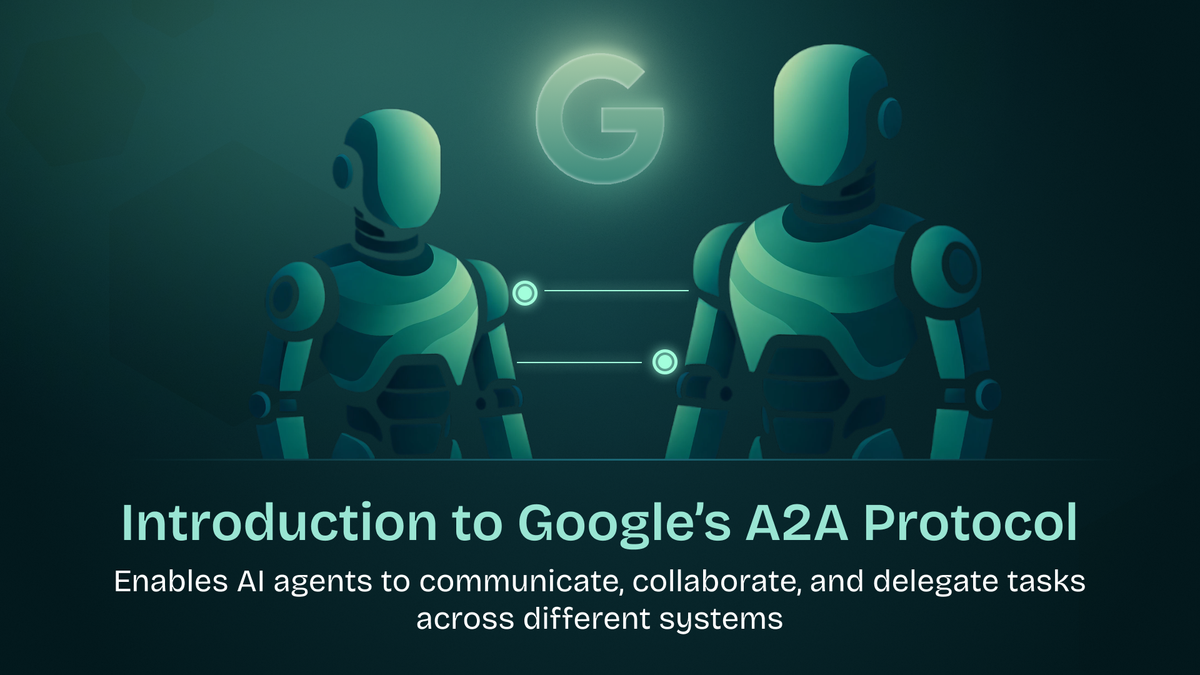Introduction to the Agent2Agent Protocol (A2A)

Communication protocols play a crucial role in enabling seamless interactions between different systems. Google's recently published Agent to Agent Protocol (A2A) represents a significant advancement in this space, designed specifically to facilitate collaborative scenarios between autonomous agents.
What is A2A?
The protocol is an open specification that enables AI agents to communicate, collaborate, and delegate tasks across different systems. It acts as a standard language for AI assistants, allowing them to share knowledge, request services, and coordinate tasks regardless of the underlying platform or framework.
Let’s discuss with an example now -
The Restaurant Example
To understand A2A, imagine you're a hungry customer at a restaurant. In this scenario, we have two distinct agents:
- The Waiter Agent: Takes orders, presents food, and handles garnishing
- The Chef Agent: Cooks food using various tools (gas stove, air fryer, microwave)
For your order to be fulfilled, these two agents must communicate effectively. The waiter can't prepare your food, and the chef doesn't interact directly with customers. This is where A2A comes into play.
How A2A Works in Our Example
When you place an order, the waiter agent must:
- Find an appropriate chef agent with the right capabilities (e.g., a seafood specialist for seafood orders)
- Authenticate itself to the chef agent (proving it's an authorised waiter)
- Communicate your order clearly to the chef
- Receive the completed dish and deliver it to you
The chef agent won't accept orders from random people, only from authenticated waiters. This mirrors how A2A handles authentication and authorisation between digital agents.
A2A vs. MCP: Understanding the Difference
While Anthropic's Model Context Protocol (MCP) focuses on how an agent accesses tools and resources (like the chef using the stove or microwave), A2A specifically addresses how independent agents communicate with each other (like the waiter talking to the chef).
Key Components of A2A
- Agent Cards: Every agent publishes a card describing its capabilities, skills, and authentication methods—similar to a chef's resume showing specialties.
- Discovery Mechanism: Agents can find other agents through well-known paths (like
domain.com/.well-known/agent.json) or future agent registries. - Task Management: Structured ways to send, track, and receive tasks between agents.
- Artifacts: The outputs produced by agents (like the prepared dish).
Why A2A Matters
The beauty of A2A lies in its ability to create an ecosystem where specialised agents can work together without knowing each other's internal workings. The waiter doesn't need to know how to cook, and the chef doesn't need to know how to interact with customers, they just need to speak the same protocol language.
As we build more complex AI systems, this kind of standardised communication becomes essential for creating truly collaborative agent networks that can handle sophisticated, multi-step tasks across different domains and capabilities.
Want a video overview?, here it is —